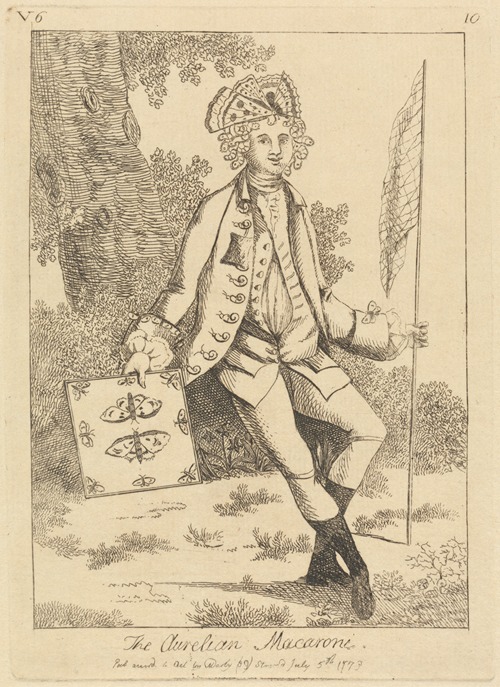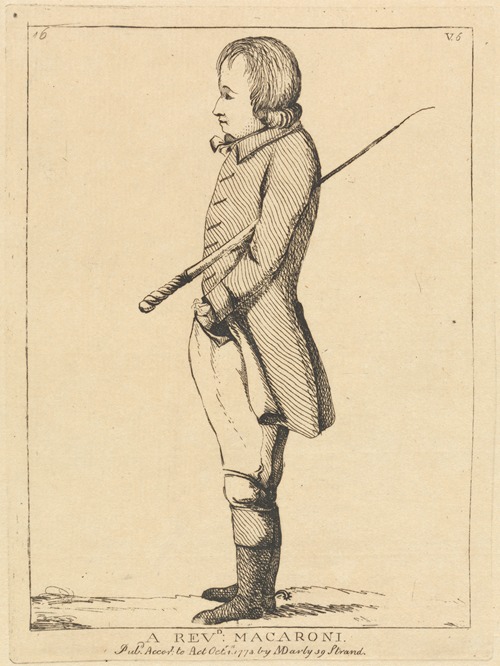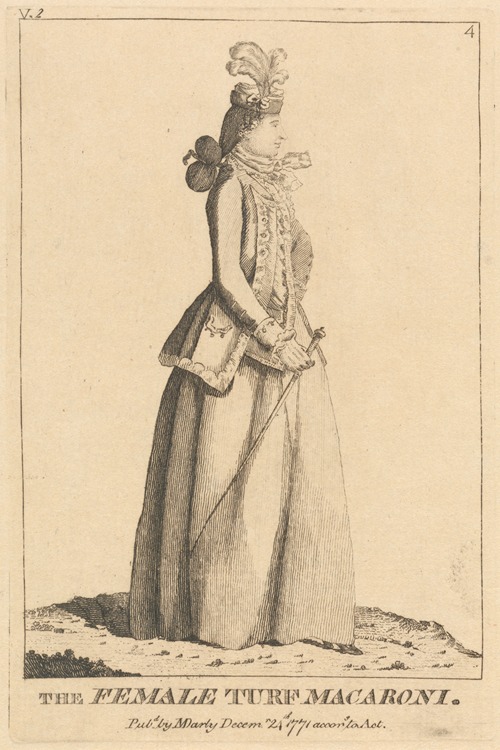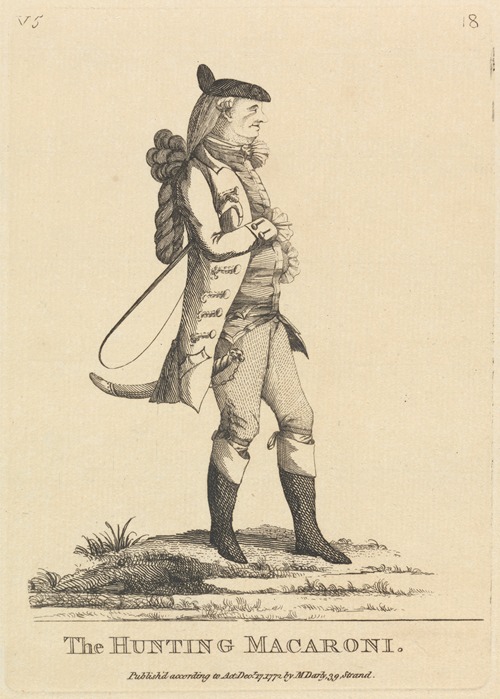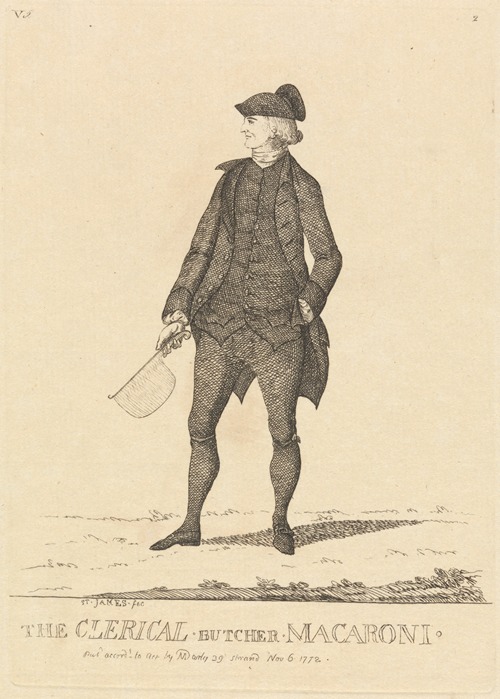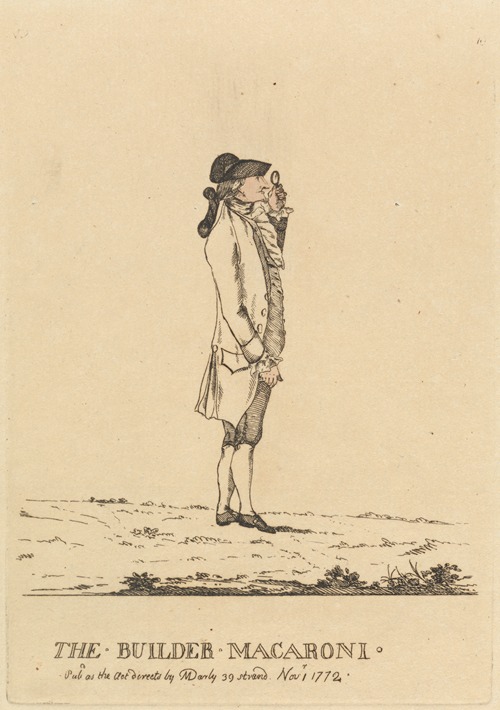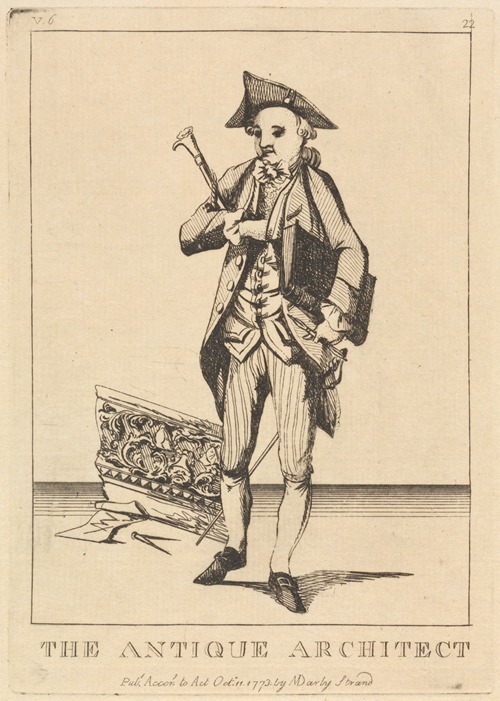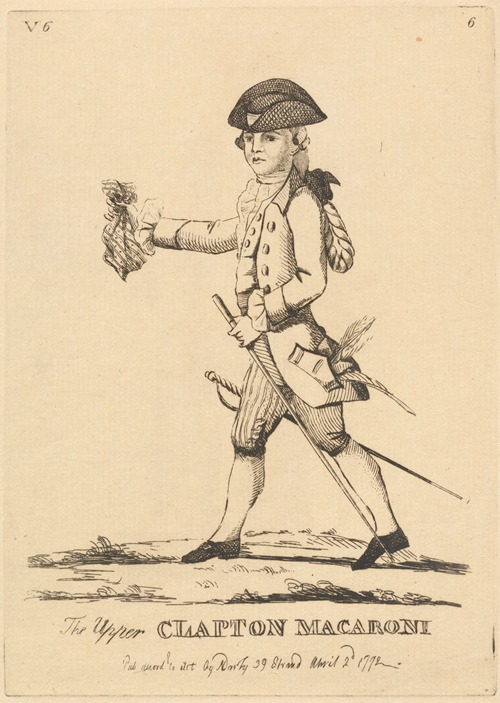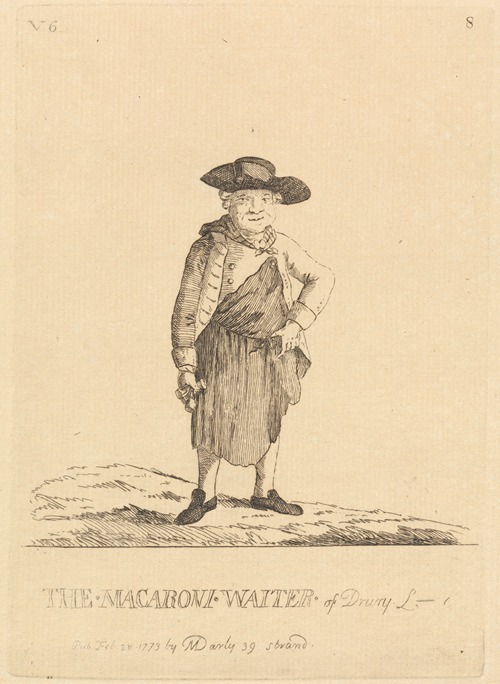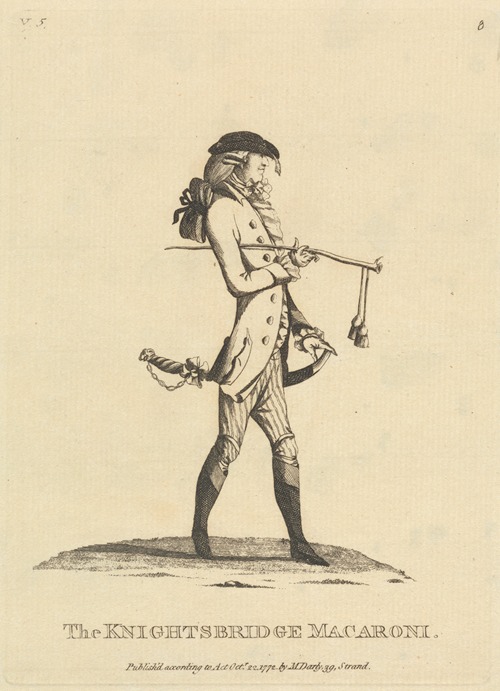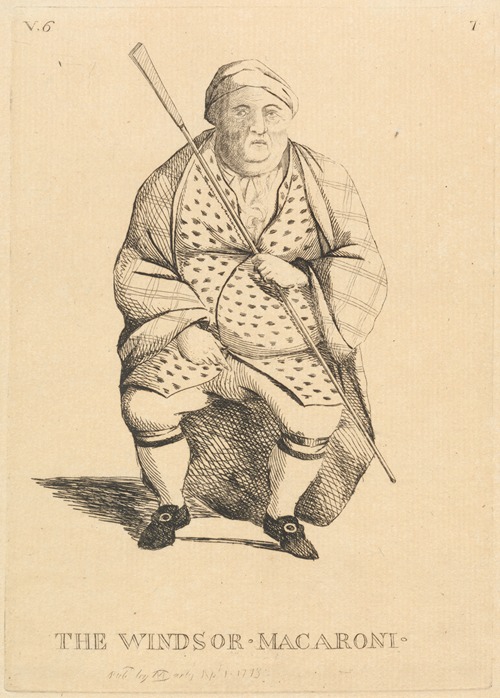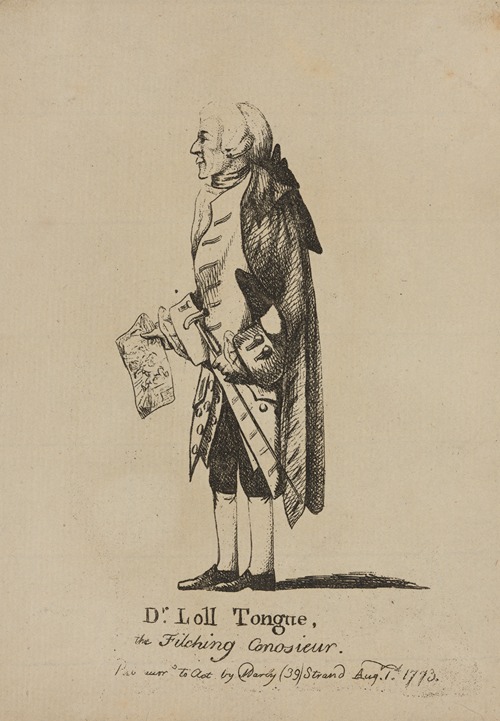
Mary Darly was a printseller, caricaturist, artist, engraver, writer, and teacher. She wrote, illustrated, and published the first book on caricature drawing, A Book of Caricaturas (c. 1762), aimed at "young gentlemen and ladies." Mary was the wife of Matthew Darly, also called Matthias (fl. 1741–1778), a London printseller, furniture designer, and engraver. Mary was evidently the second wife of Matthew; his first was named Elizabeth Harold.
By 1756, the husband-and-wife team had printshops in Fleet Street and the Strand. Mary was the sole manager of the branch at "The Acorn, Ryders Court (Cranbourne Alley), Leicester Fields." Mary advertised in the daily papers in her own name as "etcher and publisher." She was one of the first professional caricaturists in England.
The Darlys' shops, some of the first to specialize in caricature, initially concentrated on political themes in the 1750s, at a time of political crises, but then focused on world of fashion. "They seem to have been shrewd business people, changing their output in response to the fashion of the day." Their etchings and engravings included "Wigs" (12 October 1773), "The Preposterous Head Dress, or the Featherd Lady" (20 March 1776), "Phaetona or Modern Female Taste" (6 November 1776); "Miss Shuttle-Cock" (6 December 1776); and "Oh. Heigh. Oh. Or a View of the Back Settlements" (9 July 1776), a play on words that refers to Ohio Country.
The Darlys also offered drawing lessons to upperclass men and women.
The Darlys relocated their shop from Fleet Street to the West End as the craze for homemade caricatures grew. At their West End shop, they published between 1771 and 1773 six sets of satirical "macaroni" prints, each set containing 24 portraits. The new Darly shop became known as "The Macaroni Print-Shop". Matthew and Mary Darly fueled a rage for caricatures in London, flooding the market with prints on social life, such as those lampooning the so-called "macaronis."
During the 1770s, the Darlys sold a variety of prints at a wide range of prices and to customers from various social classes. Their prints included depictions of prostitutes, market vendors, maidservants, and other women of the age.
They also engraved the drawings of others. The Darlys advertised that "Ladies to whom the fumes of the Aqua Fortis are Noxious may have their Plates carefully Bit, and proved, and may be attended at their own Houses, and have ev’ry necessary instruction in any part of Engraving, Etching, Dry Needle, Metzotinto, etc..."
The Darlys advertised for amateurs to submit sketches for publication. They held an exhibition of amateur prints, such as of "several laughable Subjects, droll Figures, and sundry Characters."
The furniture-makers Ince and Mayhew employed Matthew Darly as an engraver. William Austin was a rival of the Darlys.
The Darlys were responsible for bringing Henry Bunbury's talents as a humorous caricaturist to public attention by publishing his work, and Anthony Pasquin had studied in the earlier part of his career at Matthew Darly’s studio.
There was a small engraved portrait of Mary Darly in the Print Room of the British Museum; it is called "The Female Connoisseur" (February 1772). She is depicted examining a caricature sketch.
